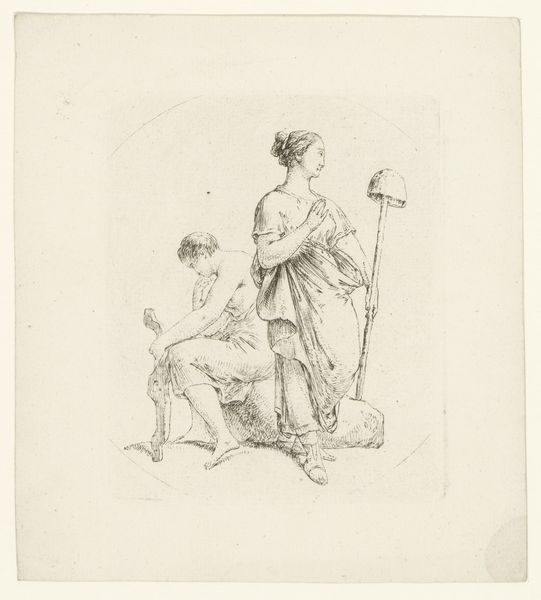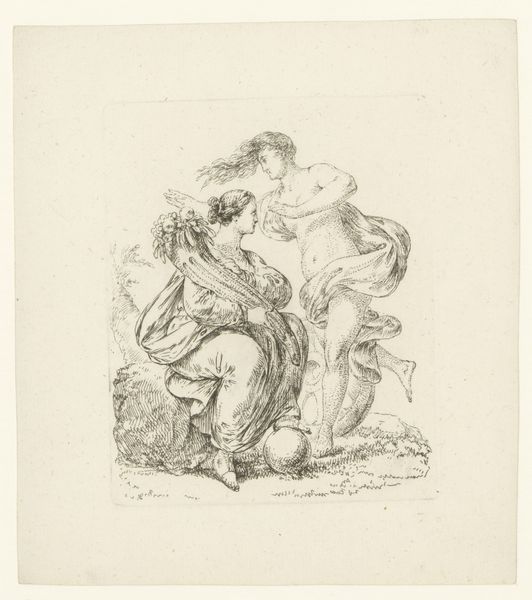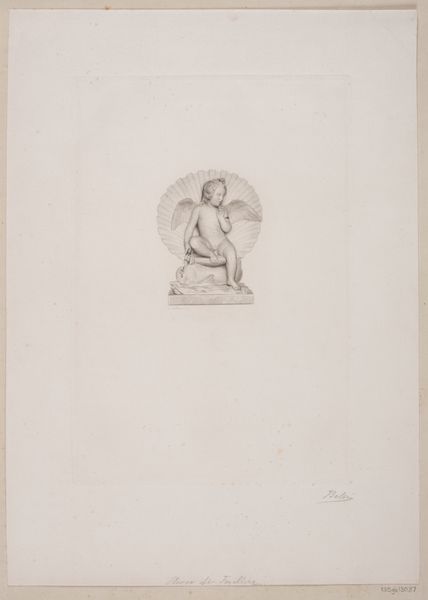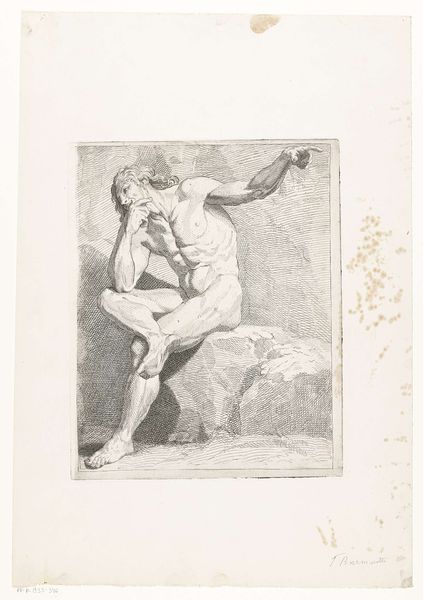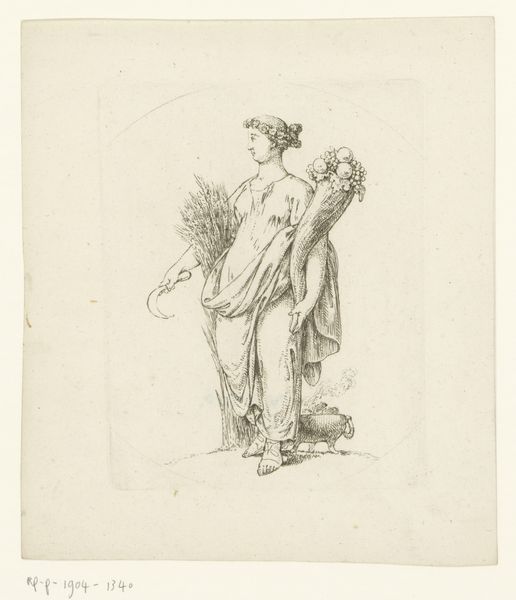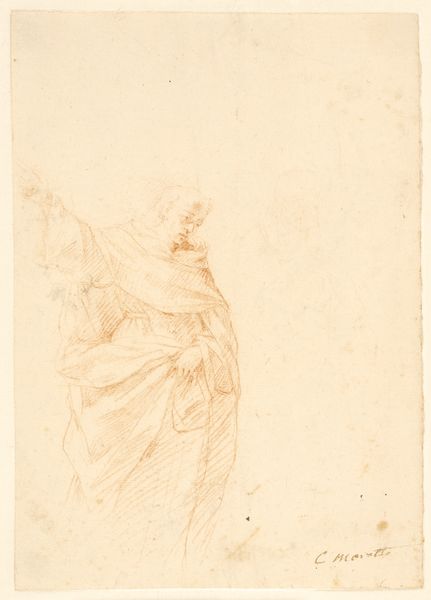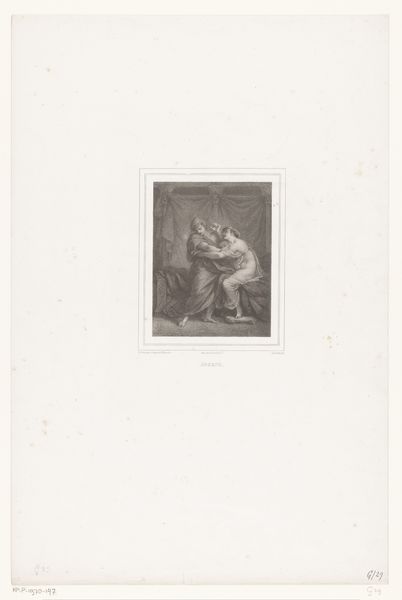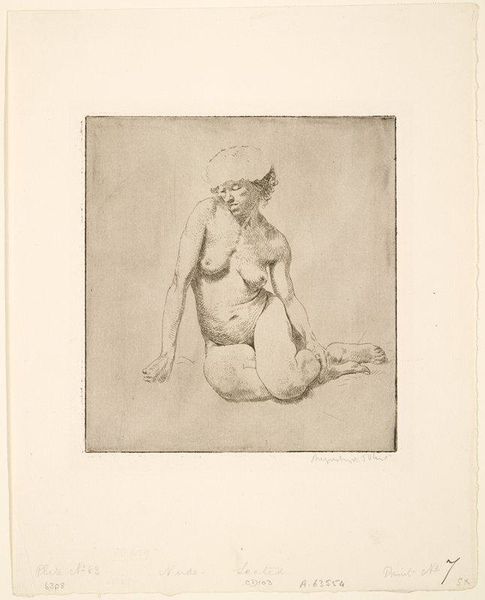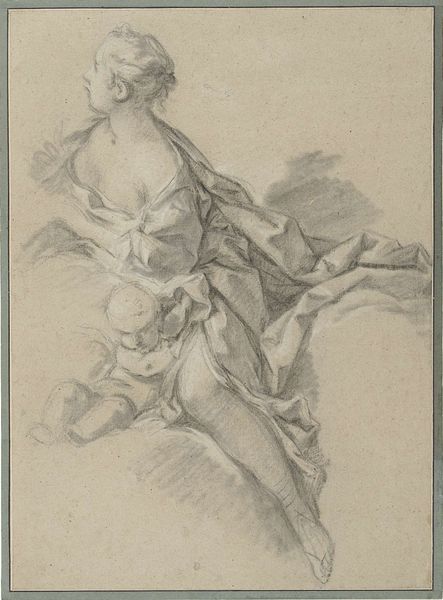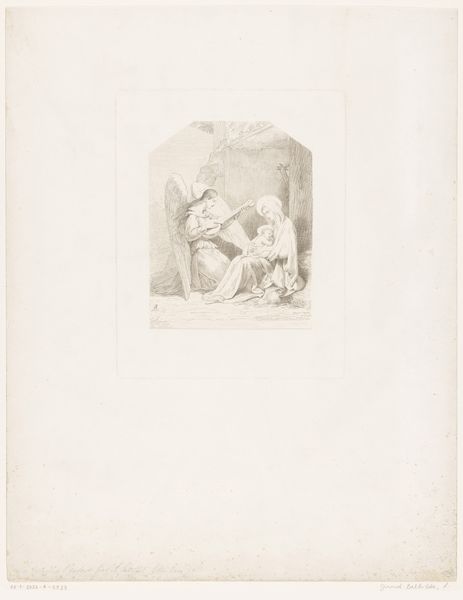
Dimensions: height 259 mm, width 179 mm
Copyright: Rijks Museum: Open Domain
Curator: Looking at "Zittende jonge vrouw houdt haar kind vast", which translates to "Seated Young Woman Holding her Child", a pencil drawing on paper crafted by Herman Boulenger between 1892 and 1895, I'm immediately struck by the fragility. Editor: Yes, the sketchiness, the limited palette, gives it a certain vulnerable quality. Almost melancholic. I'm curious how it reflects its specific socio-political moment, though? Were such intimate depictions common, or were they pushing boundaries? Curator: I think within the context of Romanticism, which heavily influenced Boulenger's style, this quiet portrayal actually speaks volumes. The image eschews grand narratives for the intimate sphere. Maternal representation, even in its simplicity, challenges the public, male-dominated art world, quietly demanding visibility and value. Editor: That's interesting. You read that simplicity as a subversive act of making women visible, subverting the expectations of academic art. To me, it evokes questions of class and labor. Is she a bourgeois mother or does her position relate to something broader than personal portraiture? Curator: The woman’s simple garment could represent both class and a conscious turn away from opulent display that we also observe in concurrent artistic movements of the period. Boulenger deliberately invites us into a space devoid of ornamentation. It’s not just a woman and child, but an artistic choice reflecting values related to social commentary, especially if we consider growing socialist influences during the late 19th century. Editor: It seems almost unfinished, the child barely formed. But that might be suggestive, too. How does it relate to contemporary discourse around the child figure, questions about innocence and development? And even if the sketch remained personal, perhaps unfinished, its public display still inflects these debates, doesn’t it? Curator: Exactly. Bringing such an intimate study into the public domain reshapes perceptions. The art world is as much an institution where politics play out as it is an economic system. The museum contextualizes these private experiences within broader historical narratives, influencing cultural understanding of maternal figures in new ways. Editor: This has broadened my perspective on Boulenger's piece. From a seeming domestic scene, it now prompts consideration of artistic intent, socio-political dynamics, and the very institutions shaping these artworks. Curator: Precisely. By understanding artwork through overlapping lenses, we expose previously unexplored nuances. Art opens us up to diverse vantage points through time.
Comments
No comments
Be the first to comment and join the conversation on the ultimate creative platform.
